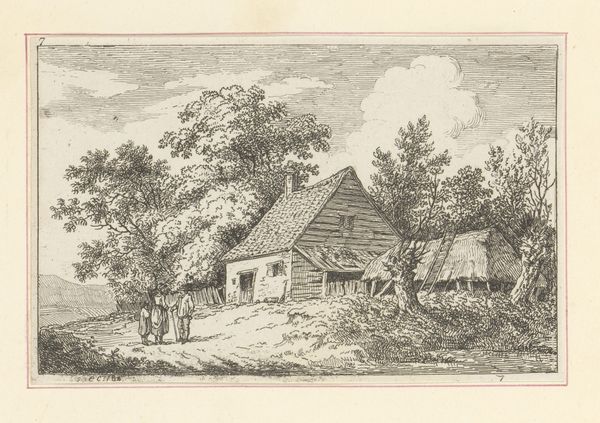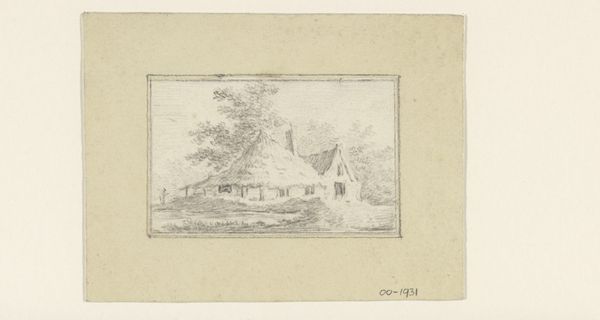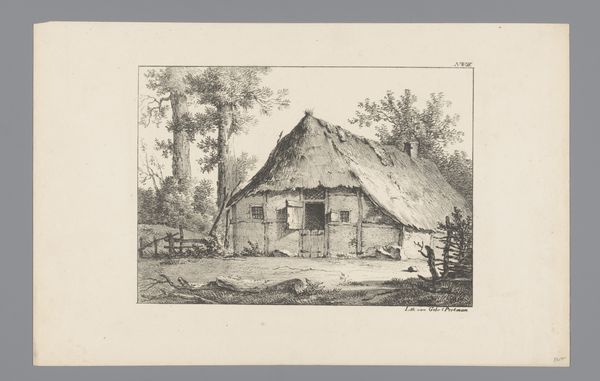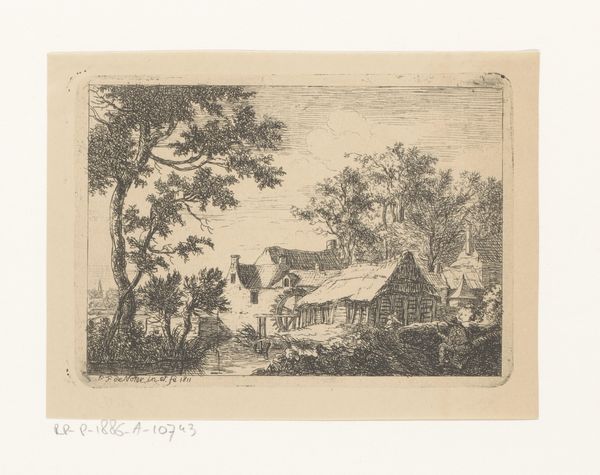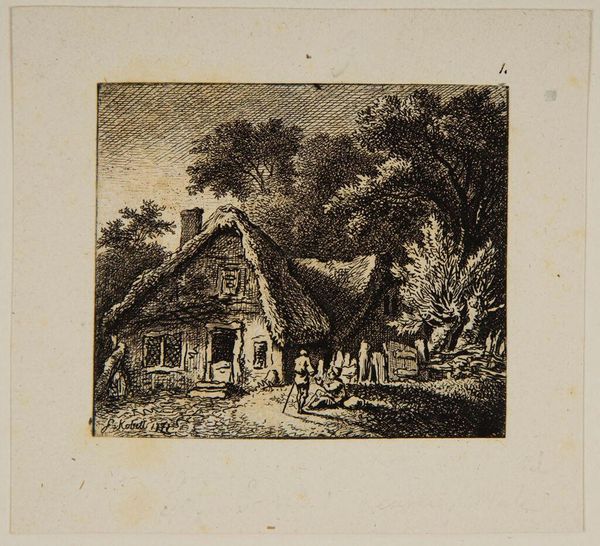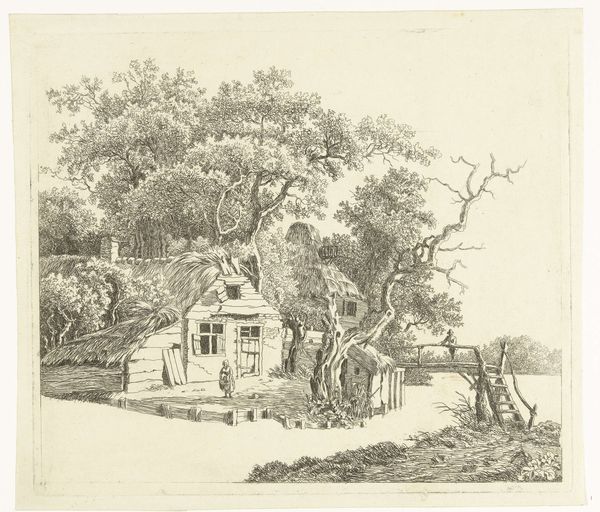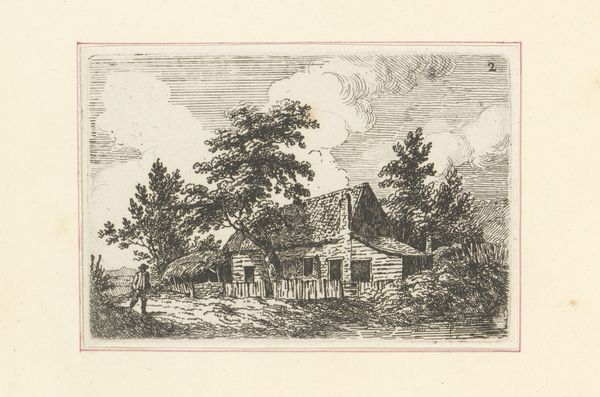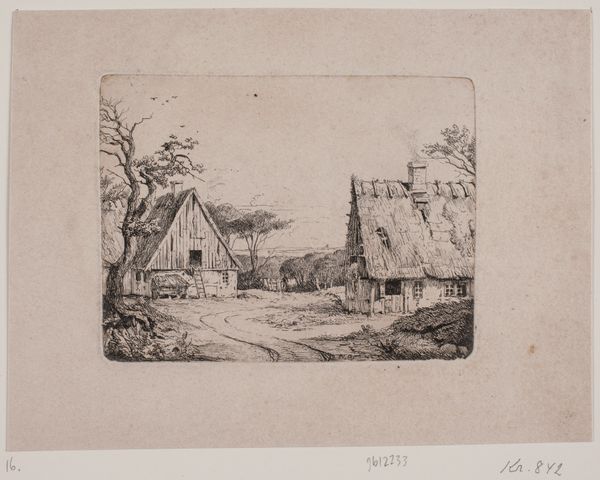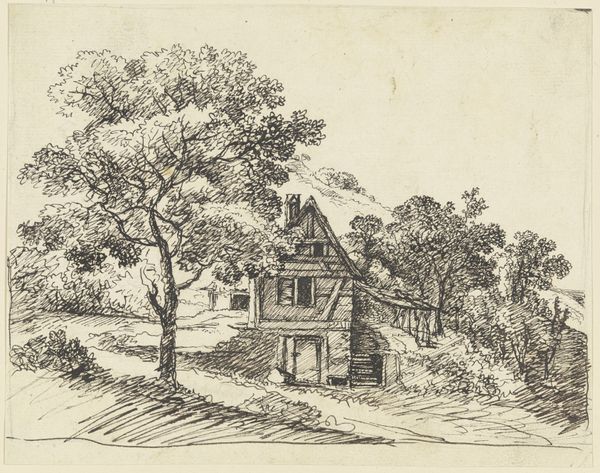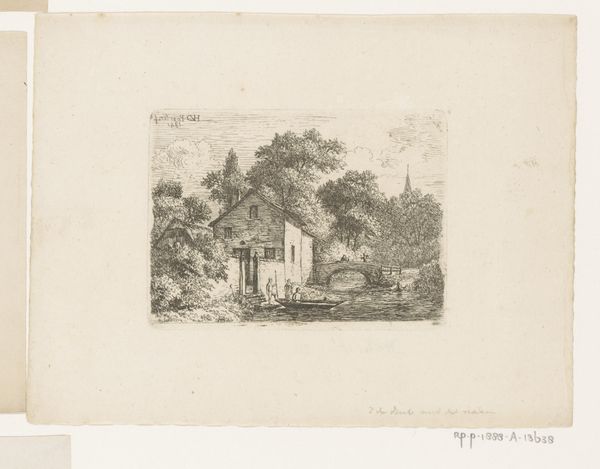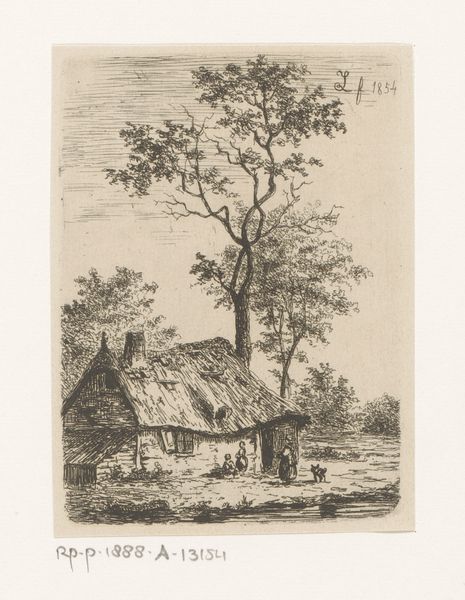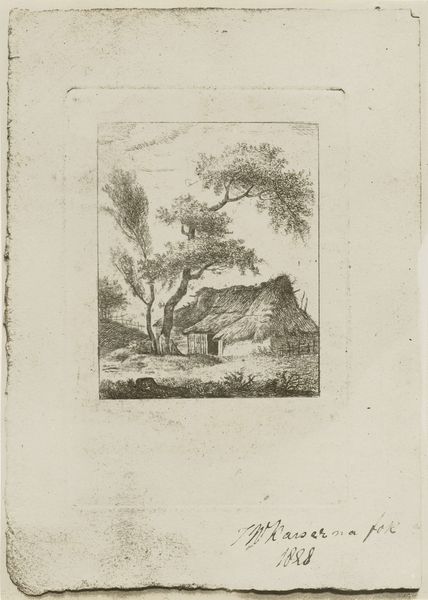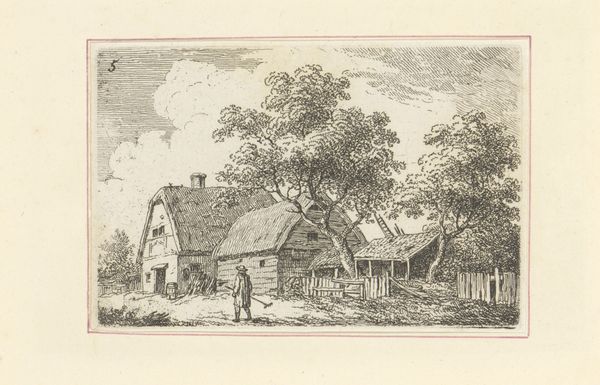
print, etching
#
dutch-golden-age
# print
#
etching
#
landscape
#
road
#
realism
Dimensions: height 130 mm, width 160 mm
Copyright: Rijks Museum: Open Domain
Editor: This is "View of a Farmhouse on the Amstelveenseweg," an etching by Anthonie van den Bos, dating from 1773 to 1838. The scene has such a beautifully simple, rural quality. What strikes you when you examine the formal elements? Curator: I am drawn to the intricate linear network created by the etching technique. Consider how the varying densities of these lines articulate both the texture of the farmhouse walls and the organic forms of the surrounding trees. It’s almost a dance between structure and chaos. Editor: It's interesting that you point that out. The detail is exquisite and that linear quality really creates the illusion of depth, yet there's a tension created by the lack of colour variation, as everything remains in a muted monochrome palette. Is there any way this serves the structure? Curator: Precisely. By eschewing colour, the artist forces us to confront the essential compositional elements: line, shape, and texture. Look at how the placement of the farmhouse within the frame establishes a clear focal point, while the surrounding trees act as framing devices, drawing the eye back into the central subject. Notice also the rough lines defining the ground. It appears to break free from the structure; could it possibly point to the notion of freedom or unboundness? Editor: Yes, the contrast is amazing! I see that now. The attention to form provides order but it seems so intentionally offset to provide freedom of thought. I had no idea that looking closely at simple aspects of form could provide such depth. Thanks! Curator: Indeed. Through its formal rigor, it is designed for contemplation. Now, if you look at this again, what do you think of it now?
Comments
No comments
Be the first to comment and join the conversation on the ultimate creative platform.
